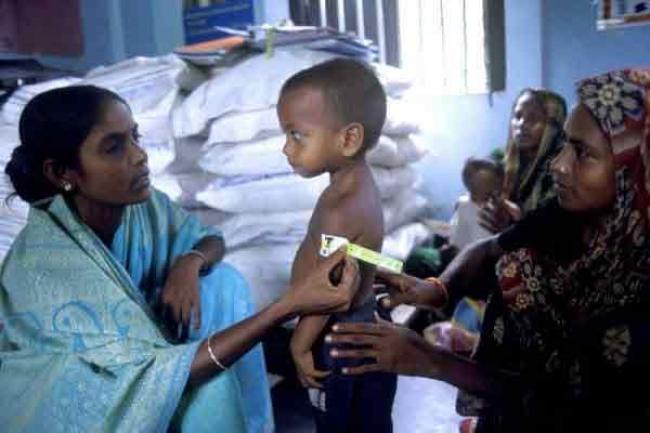Just Earth News 08 Sep 2016, 04:47 am Print

WFP/S. Noorani
“This double burden [of undernutrition as well as overweight and obesity] is depriving people from reaching their potential, and is fuelling rising rates of non-communicable diseases,” WHO Regional Director for the South-East Asia Region, Poonam Khetrapal Singh, said in a news release today.
According to the UN health agency, an estimated 60 million children under the age of 5 are stunted, a condition characterized by reduced growth rate and development, while 8.8 million are overweight. Furthermore, thinness affects 24 to 47 per cent of adolescent girls while between 2 and 24 per cent are overweight and among adult women, prevalence of overweight or obesity ranges between 18-30 per cent.
Highlighting that ending all forms of malnutrition is an important component of the 2030 Agenda for Sustainable Development, Dr. Khetrapal Singh said that WHO, in consultation with its regional member countries, developed a strategic action plan to reduce the double burden of malnutrition.
According to the news release, the action plan, from 2016 to 2025, will serve as an advocacy and reference tool for the agency's regional countries to ensure that national interventions are comprehensive and evidence-based.
The action plan also emphasizes the importance of promoting a supporting environment for nutrition interventions and securing multisectoral commitment, including commitment from the private sector, to address the issues.
The news release added that the strategic action plan was adopted by the countries at the sixty-ninth session of the agency's Regional Committee for South-East Asia, its highest decision making body for the region.
- Hunger reached ‘alarming’ ten-year high in 2017, according to latest UN report
- Hunger rates remain high amid conflict, climate shocks, warns UN food security report
- On International Day, UN chief urges action to address root causes of poverty
- Rural areas have potential to feed and employ 'younger, more crowded planet' – UN report
- ‘Surge of solidarity’ can halt spread of poverty, Cameroon’s President tells UN Assembly






